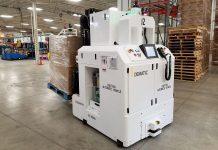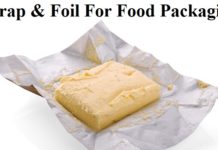It is worth noting that the packaging industry happens to be well-known for being a dynamic and innovative sector. Equipment suppliers as well as end users have gone on to embrace opportunities that happen to be created by new technology as well as market demands. Going forward, there happen to be multiple issues that may as well drive packaging technology forward in the times to come. Let us have a look into five major trends in the packaging technology segment that will continue to give the industry a much important presence within the heart of UK industry.
FLEXIBILITY
The fact is that an overriding theme when it comes to businesses so as to consider for years to come happens to be flexibility. It is growingly being recognised that concept when it comes to a facility that does just one thing, and that is fast losing its relevance. The world happens to be moving very fast so as to tie up investment as well as resources under capacity, which may as well no longer be needed due to significant changes within the market, regulations, technology, and even world events.
Flexibility within the packaging machinery goes on to range from the capacity to handle different sizes as well as types of products to being able to reconfigure packaging lines by way of using modular units that can quickly and also efficiently be made use of so as to perform different work. The capacity when it comes to linking modular units along with conveyors or by AGVs- automated guided vehicles or AMRs- autonomous mobile robots happens to be one of a range of ways for truly flexible work environs.
It is worth noting that programmable controls also go on to add flexibility as well as make changeovers much faster, and they happen to be an increasingly vital element in machinery specifications. Apart from programming, machine learning as well as AI-artificial intelligence add to the way packing operations can go on to get designed so as to remain relevant to the shift in demands of the packaging industry.
AUTOMATION, ROBOTICS, AS WELL AS VISION SYSTEMS
There happen to be many packaging businesses that, if they were to have a free hand on machine investment, would go on to aim for comprehensive solutions that decrease labor, raise efficiency, and also stretch output. Entiely automated packaging systems with technologically advanced controls are indeed an extremely attractive preposition.
The value when it comes to automation happens to be universally recognized by operational managers as well as finance chiefs, and goes on to be bedded into the plans of most packaging companies. Automation helps in solving many problems for the organisations like-
Availability when it comes to good staff
Lesser labor requirements are indeed particularly attractive at a time when recruiting staff happens to be a challenge for many organizations.
Staff expenses
Decreasing the wage bill sans losing productivity happens to be a big plus on the balance sheet. Apart from this, where automation goes on to free up staff, businesses can get benefitted from redeployment when it comes to profit-making roles like research and development.
24/7 operation
Making sure that the machinery happens to be running for the maximum amount of time goes on to give the best return on investment. Automated machines which do not need time off or overnight shutdowns.
Productivity, accuracy, as well as spoilage
Automated equipment tends to run faster than any other process that requires manual operation, is more precise, and has less spoilage.
When we talk of the real world, the overall replacement when it comes to the existing machinery is not at all time an economically viable option. An area that goes on to attract many buyers happens to be robotics, with new robotic equipment being integrated into existing operations. For instance, a robotic arm can very well be installed that could also enhance pick and place functions. The capacity when it comes to modern delta robots is indeed improving all the time, for instance when it comes to handling items that are as delicate as raw eggs and even feather-light vol-au-vent cases. More such examples include end-of line work like dramatically enhancing palletizing operations.
A progress area of robotics will continue to be cobots, in which the work happens to be in partnership with human staff. Cobots happen to be perfect when it comes to taking over repetitive, tedious, as well as tasks that are physically demanding, thereby leaving employees to manage processes and also undertake work that the cobots might not do, like clearing obstructions or may be fixing element breakdowns. Growingly, cobots happen to be coming to market that are compact, flexible, safe, and comparitively much affordable.
Precision controls happen to be at the heart of automation, and their role when it comes to ever more capable vision systems is the key to machine control, measurement, as well as inspection. The move in terms of stereo vision enables extremely detailed tracking of processes while they happen to be running as well as evaluating the flaws when it comes to finished products as well as packages. X-ray vision systems are indeed very important when it comes to highly accurate examination in terms of package contents as well as product batches. Modern vision systems can go on to eliminate the requirement when it comes to manual code validation as well as inspection, with the capacity to decrease false rejection rates. The vision systems behind AGVs and AMRs rise, especially by offering them the capacity and capability to work around challenges.
Automation, as well as associated robotic and also vision equipment, used to be the exclusive preserve of prominent businesses, especially automotive manufacturers. But as the supply of equipment progresses, such as modular units, such key types of equipment happen to be coming at a large scale, and that too within the reach of smaller businesses. It is a trend to keep watching since the opportunities will go on to arise for organizations of all kinds across the packaging sector.
ENVIRONMENTAL OWNERSHIP
The green agenda happens to be gaining prominence over the years and happens to be driven further by way of extreme weather events that go on to testify to global warming. The fact is that the world has been on the brink of an energy crisis for not years but decades, but it has now come into sharper focus due to disruptions to energy supplies by way of political events as well as conflicts.
Environmental ownership happens to be a priority for businesses due to
• Attitudes of consumers
• Regulation
• Reputation
• Decreased resources
For packaging, that goes on to mean introducing new processes as well as approaches that deal with issues like:
Void fill
Decreasing the void fill within cartons as well as other containers enables carriers to transport a larger number of smaller packs within vans, lorries, as well as containers. It also decreases the need when it comes to packing materials that traditionally include polystyrene chips as well as bubble wrap. Void fill materials happen to be increasingly moving towards recyclable as well as recycled papers and boards.
Lightweighting
Decreasing the thickness of glass, the weight of cardboard, as well as the density of plastics go on to lessen the overall tonnage of materials that are taken from packaging facilities to end users. Because of this, there is a reduction in terms of energy used in transportation and fewer material requirements that need to be recycled or go to to the landfill.
Returnable as well as reusable packaging
Returnable packaging goes on to date back to the days when returnable glass bottles for milk, beer, as well as other drink products were there. The approach is indeed resurging with reusable packaging now in usage at dedicated refill shops and is hence making an appearance within the mainstream supermarket as well as High Street stores too.
Biopackaging
While recycled as well as recyclable plastic packaging materials happen to be in widespread use, there is indeed a growing trend when it comes to biodegradable as well as compostable wrapping, trays, and also containers.
Biodegradable materials happen to be plant-based products like wheat and corn starch that get broken down slowly due to bacteria as well as other organisms. Biodegradable papers, cartons, and corrugated board are available in vast numbers. By contrast, degradable packaging is not broken down by living organisms; but they get disintegrated into smaller particles so as to become minute microplastics that are now recognized as a barrier to all kinds of marine and land environments. Compostable packaging breaks goes on to break down naturally and thereby leaves no toxic residue.
Monomaterials
Composite materials that go ahead and combine recyclable as well as non-recyclable elements pose a problem because, without the capacity to separate the components, they can go on to be treated just as landfills. The barrier for packaging companies happens to be finding monomaterials that can be completely recycled but also have the same performance traits as composites when it comes to sealing, forming barriers, as well as printing. New developments within bags, pouches, as well as tubes happen to be showing the way forward when it comes to the monomaterial packaging trend.
REGULATIONS
It is worth noting that a new marker for the way regulations will go on to increasingly impact the packaging industry came in April 2022 due to the advent of the UK government’s Plastic Packaging Tax. This novel tax results in a charge of £200 per metric tonne on the entire plastic packaging components that don’t happen to contain a minimum of 30% recycled material. The intent is that the tax will go on to create a drive towards a more environmentally friendly kind of packaging.
Businesses are required to take advice and, at the same time, keep abreast of the regulatory environment.
THE ECOMMERCE RISE
Ecommerce in today’s times is so deeply established within the retail sector that it merits as much stress as store-based retail. The UK happens to be the third largest user when it comes to e-commerce across the globe, much behind the massive online markets across the USA and China. Apparently, more than 35% of UK retail sales are made online.
In the past few years, packaging operations when it comes to retail products may have been centered on bulk distribution to central retailer warehouses, to the onward bulk distribution, and then to the stores. In contrast to this, e-commerce deliveries across homes happen to be for individual items or small groups. The kinds of packaging happen to be advancing all the time, with almost 90% of items shipped within the cardboard boxes void filled having the elements like scrunched up kraft paper, air-filled pillows, polystyrene pellets, or bubble wrap. Cartons also go on to rely on the quite extensive use of tape.
The e-commerce trend is indeed most likely to continue, even if the growth rate of the sector slows a bit. Even more innovative packaging trends will go on to emerge so as to lead to efficiencies, environmental issues, as well as customer experience. Innovative approaches go on to have in them packaging that fits across the letterbox, such as wine as well as dishwasher tablets. The trend within e-commerce towards flexible packaging has gone on to witness a move to pouches rather than heavier jars, and bag-in-box drinks are going ahead and replacing the glass bottles.
Notably, e-commerce businesses happen to be acutely aware of the reputations they have and are determined to overlook the laughable amount of cardboard as well as void fill that has been used in the past in order to deliver tiny products. One can actually look out for plentful developments within minimalist packaging tech.
A customer experience focus will also go ahead and generate innovative ways when it comes to branding packs as well as engaging e-commerce customers. Pack design will go on to increasingly incorporate access when it comes to interactive online experiences by way of QR codes, and also scannable links to augmented reality and even virtual reality brand experiences. The fact is that the days of simple cardboard boxes are indeed numbered.























